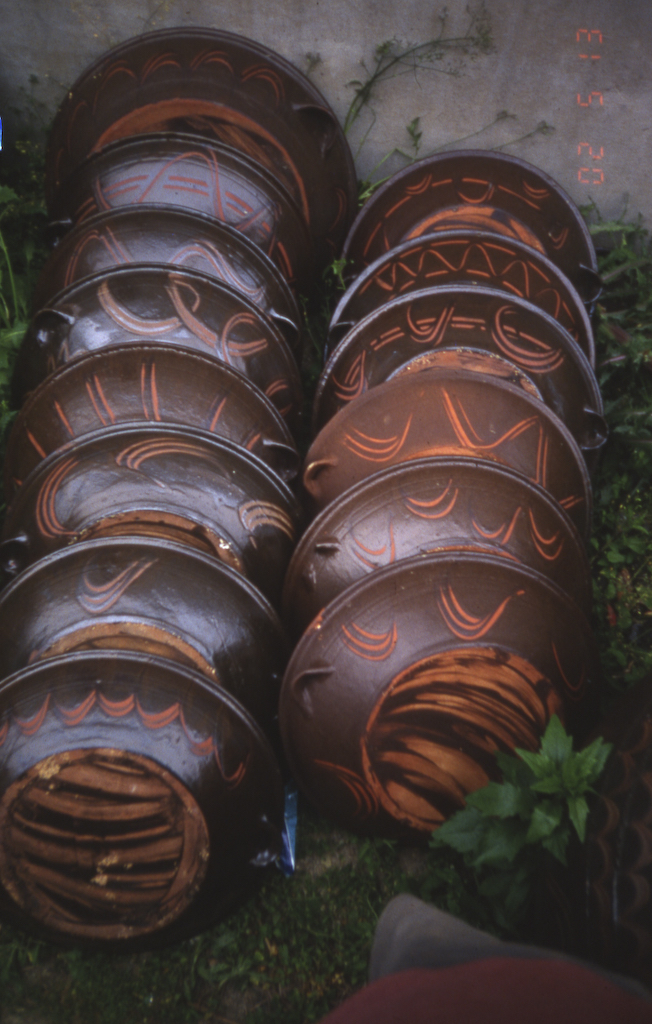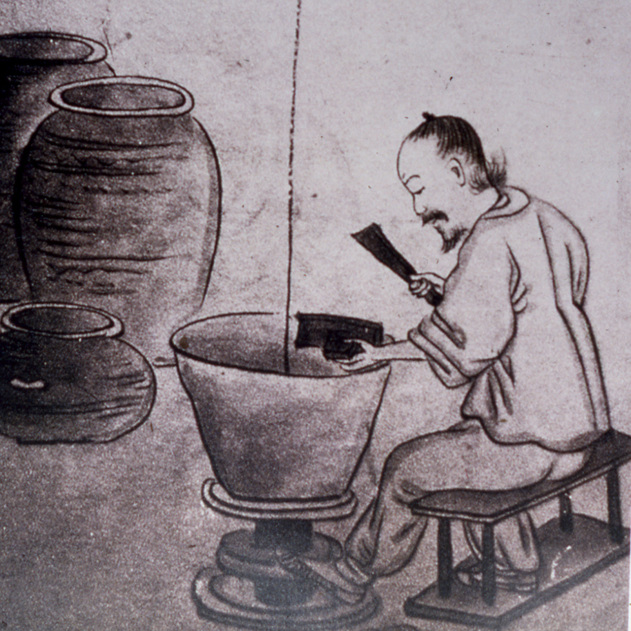

Onggi
Onggi is a Korean pottery tradition …
of making large and small storage jars for every day use. Until recently Onggi kilns were common all over the country side of Korea, and were used for making water jars, storage jars, bottles, bowls, basins etc.
Because pickled and fermented food is such an important part of the Korean diet, the Onggi potters had to develop fast and efficient ways of making storage jars. In the Cholla province of South Korea the Onggi potters developed an especially inovative technique for making large jars. Instead of using the coil building technique that is common in the rest of Korea and Asia, the Cholla potters build their pots using long slabs of clay placed on edge (see Onggi slide show for more images). The pots are then formed using a wooden paddle and anvil, stretching and shaping the pot while it spins on a kick wheel that is set in a pit in the floor. No water is used, so they can make giant jars very quickly without the jar collapsing as it gets bigger.






“The first time I saw …
an Onggi potter make a large jar I was mesmerized. It was at a workshop with potter Oh Hyang Jong at the NC pottery Center in Seagrove NC in 2000. After seeing him work, I realized that I had to learn how to make pots like that. I asked if I could come work with him and he agreed, so I went to Korea and began learning Onggi. I helped out by glazing pots, making clay, and loading kilns while I practiced making large jars. For the first four months I smashed everything that I made until I could make the standard shapes well enough to keep them. I was then able to make jars to help fill the potterys’ orders. It was an invaluable experience to be able to learn such a ancient and beautiful tradition.” - Michael
View our ONGGI SLIDESHOW to see more images.
ONGGI INSPIRATION

We love the traditional shapes of the Onggi jars of Chollah province, and many of the jars Michael makes now reflect that. However, we are also interested in exploring other shapes using the onggi technique. The process of making these jars involves throwing out long slabs that are paddled with a wooden paddle and anvil on a slow-turning kick-wheel. Rather than having the concentric rings that throwing soft clay creates, these jars have a soflty expanding volume of paddled facets, which sometimes bear the texture of the wooden tool. While the dimensions and proportions of jars were very strictly dictated in the onggi workshop in Korea where Michael learned, these are much more fluid in our own studio and some of the pots are even flattened to more ovoid shapes. At this point, we are making mostly large jars that certainly could be used for fermenting, although many of them find their way to homes for other purposes.



